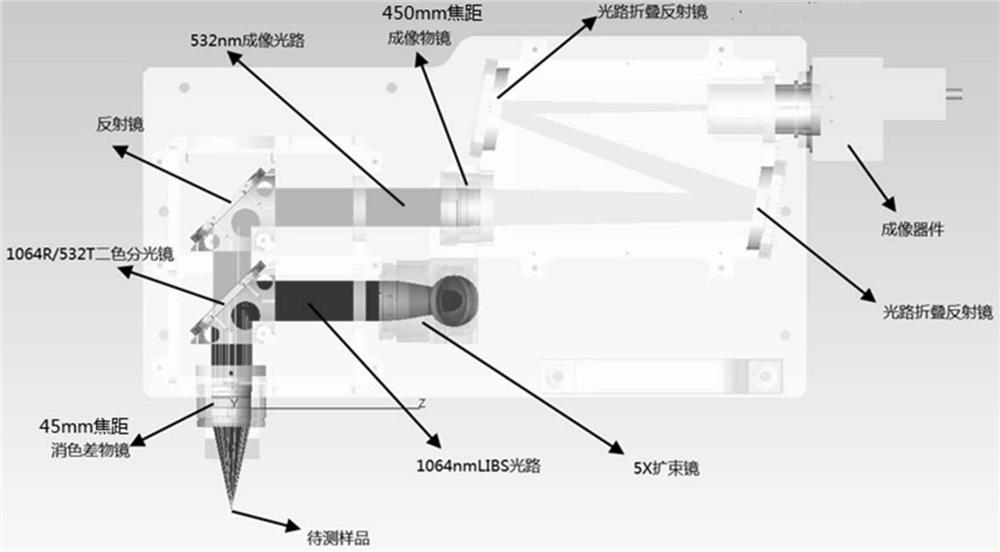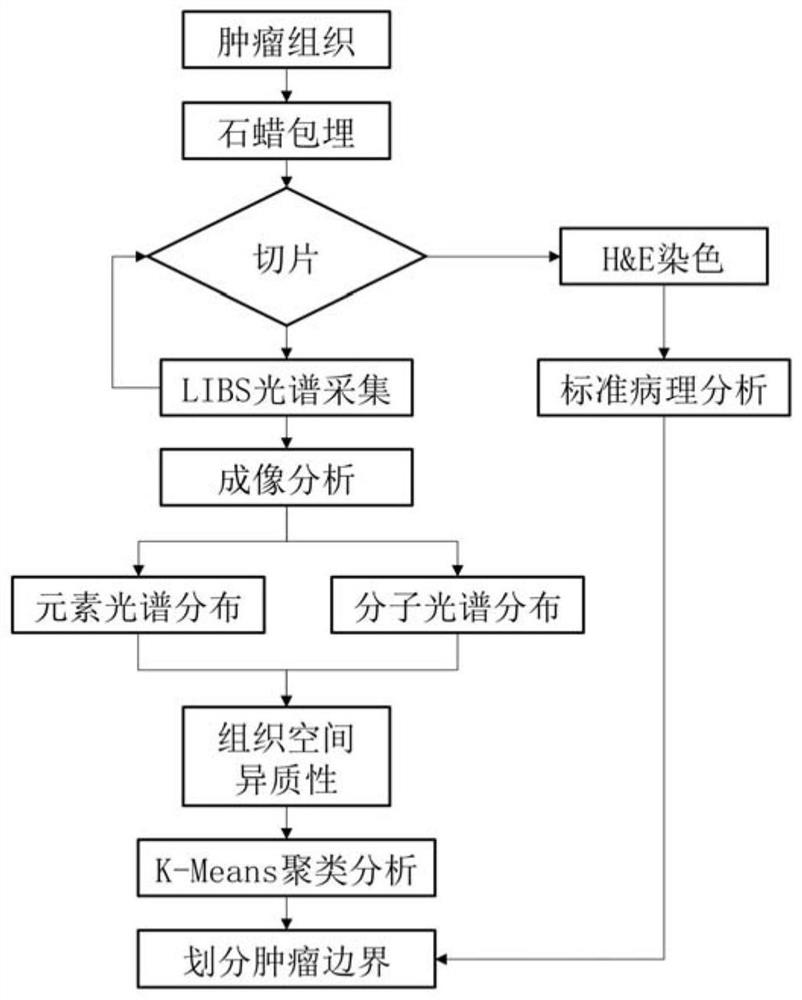Method for identifying tumor boundary by carrying out molecular spectral imaging on cancer tissue by using laser-induced breakdown spectroscopy technology
A technology of laser-induced breakdown and spectroscopy, which is applied in the field of identifying tumor boundaries, can solve the problems of identifying tumor boundaries with unseen molecular spectral imaging, ignoring the spatial heterogeneity of molecular spectroscopy and biological tissues, etc.
- Summary
- Abstract
- Description
- Claims
- Application Information
AI Technical Summary
Problems solved by technology
Method used
Image
Examples
Embodiment 1
[0042] Embodiment 1: The present invention is used for the device of fast automatic LIBS imaging
[0043] The present invention is used for fast and automatic LIBS imaging device design and mainly includes four parts:
[0044] (1) Plasma excitation device: Nd:YAG laser (Innolas, Germany) was used to generate laser pulses. The laser beam is focused on the sample surface with a small spot size to excite the plasma ( figure 1 ). Specifically, the 1064nm laser is vertically incident on the 5X beam expander from the small hole at the back end of the equipment. After the beam expands and compresses the divergence angle, the laser continues to enter the laser / imaging coaxial system, and is reflected by the 1064R / 532T dichroic beam splitter and turned 90°. Focus on the sample to be tested through the 45mm focal length achromatic objective lens.
[0045] (2) Displacement device: The motorized XYZ stage is triggered by a pulse signal from a digital delayer. As the sample is fixed on...
Embodiment 2
[0049] Example 2: Method for Identifying Tumor Boundary in Lung Cancer Tissue Based on Molecular Spectral Imaging of LIBS Technology
[0050] The method for identifying the tumor boundary of lung cancer tissue based on molecular spectral imaging of LIBS technology in the present invention comprises the following steps:
[0051] 1. Sample preparation
[0052] Samples were collected from lung cancer patients diagnosed as adenophosphocarcinoma after surgical resection, and three types of tissues were collected: cancer tissue, paracancerous tissue, and normal tissue; then, they were paraffin-embedded according to standard pathological methods, and the embedding was performed using a microtome. The paraffin block of the tissue was sectioned until a flat section exposing most of the tissue was obtained, and the subsequent LIBS analysis was performed directly on the sectioned paraffin block.
[0053] At the same time, serial sections of 5 μm were collected for H&E staining and stand...
Embodiment 3
[0065] Example 3: Method for Identifying Tumor Boundary in Lung Cancer Tissue Based on Elemental Imaging of LIBS Technology
[0066] The method for identifying the tumor boundary of lung cancer tissue based on the elemental imaging of LIBS technology of the present invention comprises the following steps:
[0067] 1. Sample preparation
[0068] With embodiment 2.
[0069] 2. Set device parameters
[0070] With embodiment 2.
[0071] 3. Imaging analysis
[0072] Perform data preprocessing such as baseline calibration on the collected LIBS spectra, and then extract Na(I) (588.8-589.3nm), Ca(II) (392.9-393.8nm), Mg(I) (279.3-279.8nm), Al (I)(395.9-396.3nm), Si(I)(287.9-288.4nm), Fe(II)(259.8-260nm) and Cu(I)(324.4-324.9nm) peak area, normalized The relative value of the element spectrum peak area of each point in the matrix is obtained. Black corresponds to the relative peak area value of 0%, and white corresponds to the relative peak area value of 100%. The change in t...
PUM
 Login to View More
Login to View More Abstract
Description
Claims
Application Information
 Login to View More
Login to View More - R&D
- Intellectual Property
- Life Sciences
- Materials
- Tech Scout
- Unparalleled Data Quality
- Higher Quality Content
- 60% Fewer Hallucinations
Browse by: Latest US Patents, China's latest patents, Technical Efficacy Thesaurus, Application Domain, Technology Topic, Popular Technical Reports.
© 2025 PatSnap. All rights reserved.Legal|Privacy policy|Modern Slavery Act Transparency Statement|Sitemap|About US| Contact US: help@patsnap.com



